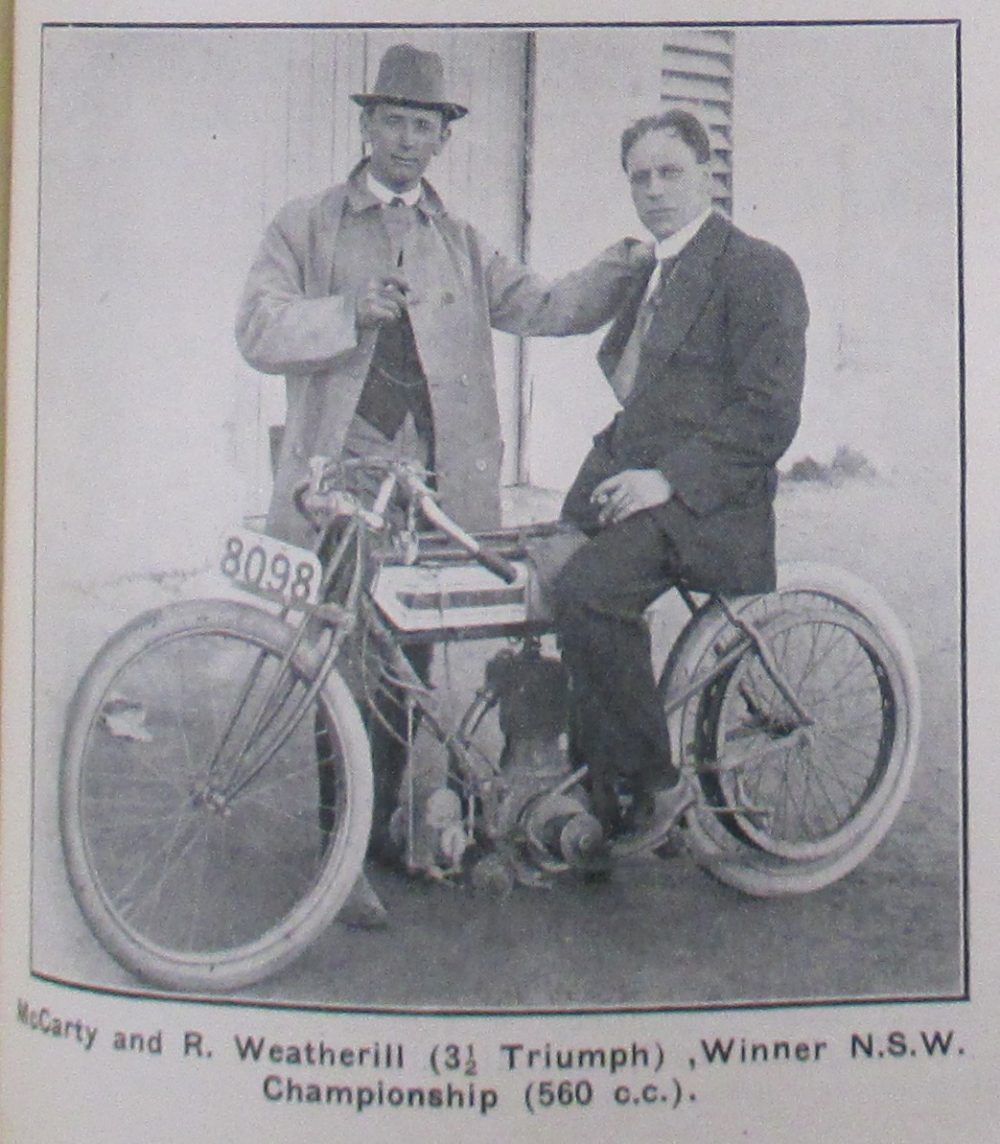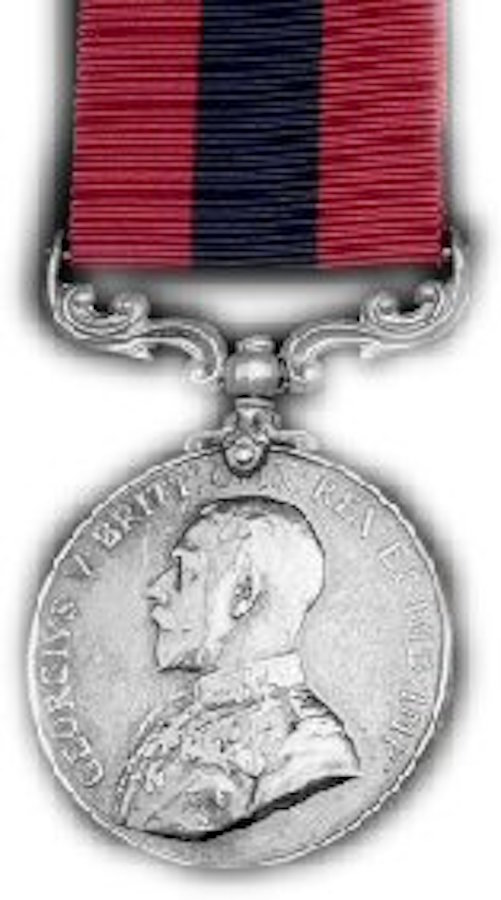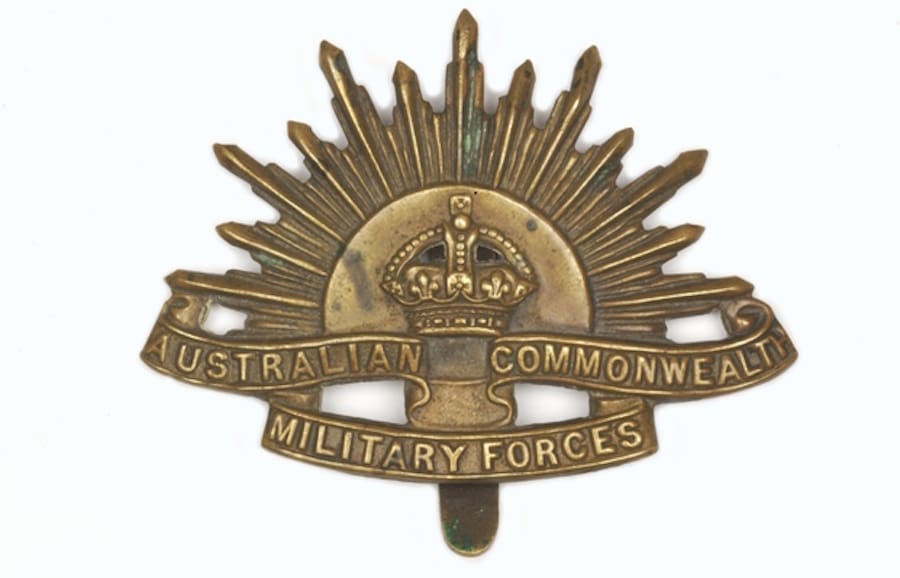Prior to the Great War, Buck was building motorcycles at Rex Engineering in Coventry in the UK. At the same time, he was also winning TT class races at Brooklands where a young Australian Les Bailey (AMCN Vol 67 No 18) was also making a name for himself.

The two men became close friends, leaving England together to race motorcycles in Australia, bringing three 2¾hp Douglas machines home with them. These bikes were immediately put to good use when Frank Meller, Les Bailey and Buck Weatherilt ran first, fourth and sixth in the 1913 Zenith Cup. Observers reported “some very fine riding through heavy sand, along with an excellent exhibition of hairpin bend cornering, Weatherilt being amongst the best”. This sand riding experience was to stand Buck in very good stead over the following few years.
It wasn’t long before Buck was working for Bennett & Wood Motor Cycle distributors and was soon an established riding star. In March 1914, he won the NSW Motorcycle Championship on his 3½hp Triumph and was looking forward to the inaugural Australian Grand Prix to be held in September that year.

However, Buck his racing days would have to wait when the Motor Cycle Despatch corps proved such a success that several members of the Motor Cycle Club joined the Australian Expeditionary Force. At 31, Buck enlisted as an official member of the 1st Field Company Engineers. His short but very successful racing career in Australia was on hold though he was well remembered with The Sydney Morning Herald paying tribute to his standing: “The NSW Grand Prix, and the Course de Circuit, demonstrated the popularity road-racing has attained, and the majority of the riders in these events will continue to compete. A notable absentee, however, will be Percy ‘Buck’ Weatherilt, who is now with the Expeditionary Forces in Egypt.”
Buck was soon promoted to Lance Corporal and spent some time in the Australian Flying Corps before being transferred to the 2nd Light Horse. It was during this time he displayed his motorcycle talents, first with a Mention in Despatches before a Distinguished Conduct Medal with the following citation: “A fearless despatch rider in action, and no mishap has ever prevented him from getting through with a despatch. In the Amman operations, October 1919, when all wheeled traffic had to be left behind, he succeeded in getting through to the 2nd Australian Light Horse Brigade, across the Mountains of Moab. Although under fire and molested by Bedouins, he showed throughout a fearless example and his devotion to duty was of the highest.”

News of Buck’s adventures was starting to filter back home and The Arrow, a popular Sydney weekly sporting newspaper – gave readers an update on Buck’s progress. “After nearly five years continuous service in Gallipoli, Egypt and Palestine, Weatherilt has been granted furlough, and is now in England on a visit to his aged mother. He will probably take the opportunity of visiting the scenes of some of his former exploits with A. W. Barnes. This noted pairing made a practice of hair-raising exhibitions of sidecar riding in hillclimbing competitions long before the war. So good was the combination of Weatherilt, Barnes and their machine, that they were frequently barred from competing.”

In March 1919 a Miss McCarthy received a letter from Buck reporting that he was ‘as fit as a fiddle and doing well’ and gives great praise to his Triumph Model H (nicknamed the ‘Trusty’ due to its great reliability).
“The way it comes through the mud is really wonderful,” reported Buck. “Just fancy 20 miles in low gear though eight inches of mud and no tendency to overheat. If people could see what Triumphs are doing here they would not have any other machine on their mind. Others have been tried and found useless, except on good roads, which are scarce.’
Having experienced the reliability of Trusty, first in winning the NSW Championship, then the slush of the Nile Delta and the sands of Palestine, Buck may well have laughed at the notion of aiming a five kilogram .303 Lee-Enfield from the saddle as the stuff of dreams. But the recruitment poster sure sucked the jackaroos in.
Buck returned to Australia in November 1919 and within a year he married Madelaine Brooker, and settled in Cronulla where he was now being noted for his billiards skills.

In 1922 Madelaine went missing and the authorities were unsuccessful in determining the outcome of her disappearance; a chapter in Buck’s life that remains a mystery.
Buck never returned to his love of motorcycle racing but he retained his mechanical skills. He resettled in Cootamundra where for many years he operated the local service station servicing and repairing cars and motorcycles eventually building his own motorcycle garage, NRMA depot and car-rental business. On retirement, he moved to Bourke where he – along with 13 other passengers – survived the crash of the Mail Plane.
He lived life to the fullest and in his late 80s was still active as time-keeper and marshal with the local horse races and regularly played lawn bowls. Buck passed in August 1971.

Words and Photography Peter Whitaker











